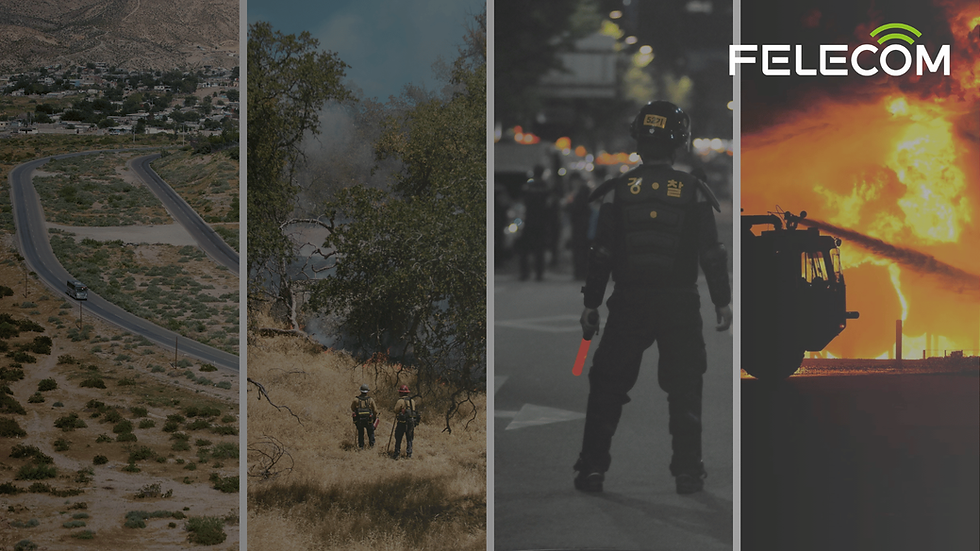HF Communications vs. Satellites vs. 4G/5G: Who is the Optimal Solution in Critical Missions?
- wangwillien
- May 29
- 3 min read
In today’s rapidly evolving world, communication technology plays a vital role in critical missions. While we’re all familiar with satellite technology and have used 4G and 5G networks, there’s still a need for HF communications (High-Frequency communications) in certain situations. But why? And what makes HF communications stand out from its counterparts like satellites and 4G/5G? Let’s explore these questions in depth.

What is HF Communication?
High-frequency communication, commonly referred to as HF communication, operates within the range of 3 to 30 MHz. Unlike satellites or 4G/5G, HF radio doesn’t rely on terrestrial cell towers or satellite infrastructure. Instead, it uses the ionosphere to bounce signals over vast distances. But why do we still rely on HF communications in modern technology?
In short, HF communication is reliable when other systems fail. Satellite systems require a clear line of sight, and 4G/5G signals can be blocked by geographical features like mountains or buildings. HF communication, on the other hand, can cover long distances without the need for a direct line of sight. It’s highly effective in remote or disaster-stricken areas where other networks might not function, ensuring uninterrupted communication during critical missions.

2. Which Industries Need HF Communication?
The importance of HF communication extends beyond just traditional use in military operations. Many industries benefit from HF communication in scenarios where 4G/5G and satellite networks are not viable options:
Disaster Relief and Emergency Services: In the aftermath of natural disasters, when infrastructure is damaged or non-existent, HF communication serves as a vital backup solution, enabling reliable communication and ensuring that help reaches those in need swiftly and effectively.
Public Security Units: Whether on routine patrols, border oversight, or regional deployments, public security units often operate in areas where conventional connectivity is unreliable or unavailable. In these conditions, HF communication ensures secure, real-time coordination, allowing uninterrupted communication for efficient and effective operations.
Humanitarian Aid Missions: Operating in remote or crisis zones where infrastructure is compromised or completely absent, humanitarian aid missions require reliable communication to ensure effective coordination and the safety of all involved. HF communication guarantees continuous contact, even when other communication systems fail.
Energy: In environments like pipeline inspections, offshore platforms, and isolated stations, communication is essential. Traditional solutions often struggle with distance, environmental noise, or rugged terrain. HF communication provides a reliable and resilient backup, ensuring uninterrupted communication across these challenging locations.

3. What Are the Advantages of HF Communication Over Other Options?
While satellite communication and 4G/5G networks are often faster and more commonly used in urban settings, HF communication offers several distinct advantages that make it ideal for specific critical missions:
Cost-Effectiveness: HF radios are typically more affordable than satellite systems, and they don’t require expensive infrastructure to operate.
Long-Range Capabilities: HF radio signals can travel thousands of miles without the need for repeaters, making them perfect for remote areas.
Reliability: Unlike satellite communication, which can be disrupted by weather conditions, HF radio is much more reliable in extreme weather and challenging environments.

4. What Type of HF Radio is Needed Today?
As the world continues to evolve, so do the demands on communication technology. Modern HF radios need to be more advanced, offering features like:
Software-Defined Radios (SDR): The future of HF communications lies in software-defined radios, which are flexible and adaptable to various communication needs, offering enhanced performance and upgradability.
Compact and Integrated Designs: To meet the needs of fast deployment, modern HF radios should be easy to transport and set up, offering compact solutions without compromising on performance.
Encryption and Security: For critical operations, encryption is a must. Modern HF radios offer AES-256 encryption, ensuring that communication is secure and protected from interception.


Comentários